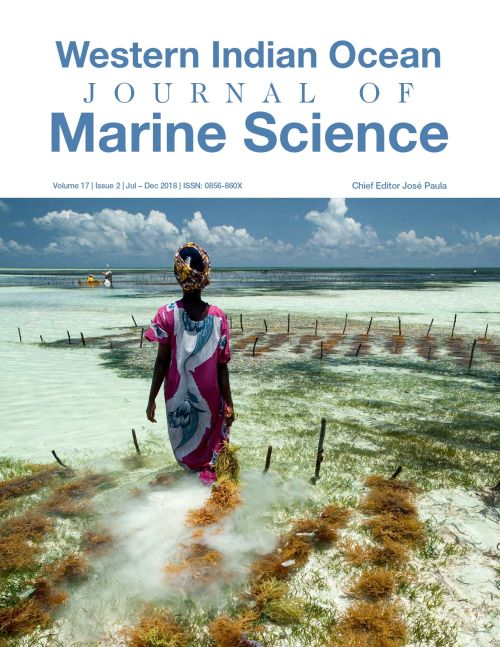Main Article Content
Participatory assessment of priority fishery profiles in an overfished urban inshore seascape in Kenya
Abstract
This study presents a participatory assessment of overfished small-scale fisheries from selected landing sites in coastal Kenya using mixed quantitative and qualitative research methods. A seven-criteria ranking using a modified Delphi questionnaire with a 5-point Likert scale was used. Through a process of scoring the fisheries on these crite- ria, marine aquarium fishing ranked highest with 86.7%, while beach seine ranked lowest at 55.3%. Averaging of scores and ranking across focus group discussions (FGDs) and key informant interviews (KIIs) at individual sites resulted in the following highest scorers: handlines (58.6%), octopus (55.9%), and basket traps (52.5%) for Bamburi; aquar- ium fishing (86.7%), handlines (85.5%), and reef-seines for Marina/Mtwapa; mixed pelagic (60.7%), octopus (60.5%), and rabbitfish (58.4%) for Nyali; and basket traps (70.4%), handline (57.8%), and monofilament nets (64.3%) for Reef. Destruction of critical habitats and prohibitive costs of fishing crafts were key management issues identified through scoring and ranking criteria, while 22 management issues were identified through FGDs. These findings suggest an existing spatial mixture of differences and commonalities among fisheries profiles and management issues. This study revealed trade-offs that should be incorporated in the co-management plans of the respective Beach Management Units (BMUs) in coastal Kenya.






